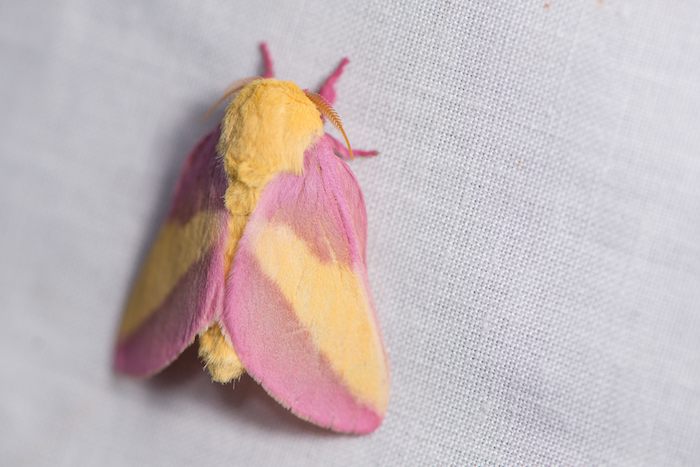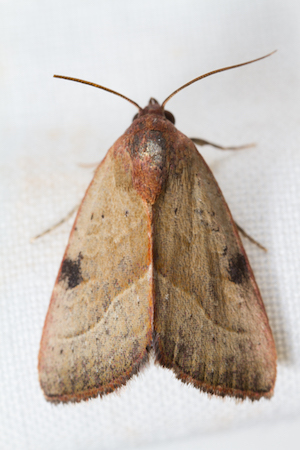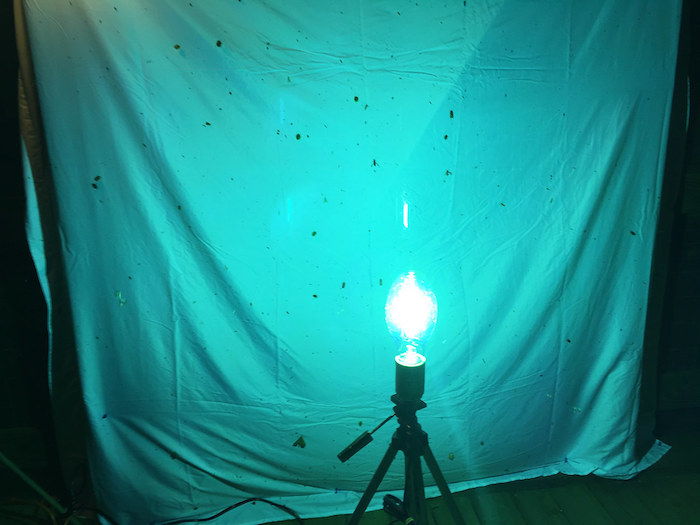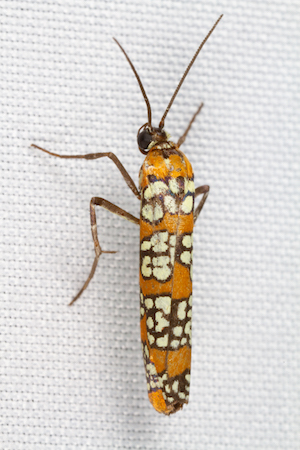Let’s Celebrate National Moth Week
For immediate release ‐ July 21, 2021
Contact: Jessica Wackes, 919.707.9850. Images available upon request
 Rosy Maple Moth.
Rosy Maple Moth.
It seems there is a day for everything now. National Fried Chicken Day. Talk Like a Pirate Day. National Tape Measure Day. You can celebrate nearly anything for a day, but moths? They are so amazing and important that they get a whole week. National Moth Week is July 17 to 25, 2021, so get ready to celebrate these fantastic creatures of the night!
Why moths? Though several species have a bad reputation for destruction of crops or fabrics and others are overlooked entirely, moths play a crucial role in our environment. Their importance as food for other species cannot be overstated. Birds, mammals, reptiles, other insects and more depend on moths for their nutrition. Recent research has suggested that moths are also far more important pollinators than anyone expected. Some moth species help control plant pests and still others are great indicators of environmental change. While often seen as a nuisance or simply ignored, moths of all stages are incredibly important in our environment.

Wedgling Moth.
National Moth Week helps draw attention to the often unseen importance of moths in our lives by encouraging people worldwide to take a moment to appreciate the moths around them. Attracting moths is relatively easy. Moths readily come to lights at night (the exact reason why remains uncertain), so you can bring moths right to you by simply turning on a light. If you have a porchlight, turn it on at dusk and visit it a few hours later to see what’s flown in. No porchlight? Any handy light-colored wall with a light will do! You can supercharge your porchlight by switching out your white bulbs for inexpensive LED ultraviolet bulbs (also called blacklight bulbs) that you can get at most well stocked hardware stores or online. UV light is highly attractive to many nighttime insects and will often bring in more insects than standard white lights, though consider wearing UV eye protection during use.
 This is a moth light.
This is a moth light.
Many moths are also attracted to baits. Moth enthusiasts mix beer, banana and brown sugar in a blender and put it out in the sun in a covered bowl for a few days. You can make bait without beer but let your banana/sugar mixture sit a few extra days so that it can start to ferment. Paint the mixture onto a fence post, tree trunk, or other vertical surface away from your home. Visit your bait stations with a flashlight and see what comes in for a drink!

Ailanthus Webworm.
We have over 2,600 moth species in North Carolina, which can be overwhelming for new moth-ers. There are happily several online resources and smartphone apps that can help you narrow down your options. One of our favorite apps is Leps by FieldGuide. It compares a photo you snap with your phone (shine a flashlight on the moth as you take the photo for the best result!) to its database and gives you species suggestions. Another great identification resource is the iNaturalist app/website, which allows you to contribute moth observations with scientists as a citizen scientist while also suggesting identifications. Prefer a traditional field guide? The “Peterson Field Guide to Moths of Northeastern North America” (and the companion volume for the Southeast) is a wonderful option.
Most people think of moths as drab, uninteresting animals, but this couldn’t be further from the truth. Moths can be absolutely stunning, range in size from a few millimeters to the length of your hand and play so many crucial roles in the environment. With National Moth Week coming soon, now is a great time to get to know these amazing animals. We hope you’ll join the celebration!
by Chris Goforth, Head of Citizen Science
For more information about our upcoming activities, conservation news and ground-breaking research, follow @NaturalSciences on Instagram, Twitter and Facebook. Join the conversation with #visitNCMNS.

